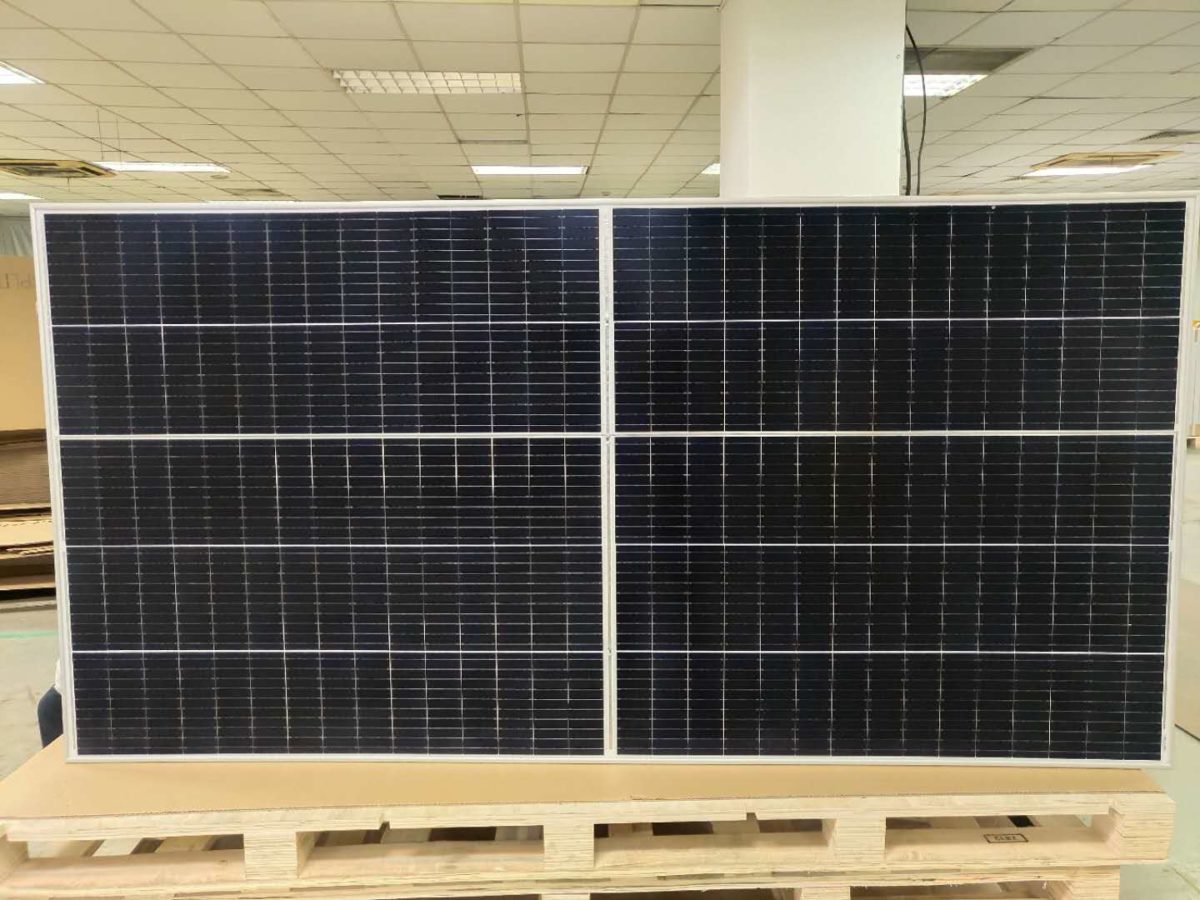From pv magazine Germany
An independent test by Germany’s TÜV Rheinland has confirmed a power output of 515.8 W for Trina’s new Vertex PV module series. “It passed the IEC test for photovoltaic modules from TÜV Rheinland and received both certification according to the performance standard IEC 61215 for PV modules and the safety standard IEC 61730 for PV modules,” said the Chinese module maker on Monday.
Trina launched the 500 W module at the end of February. In mid-March, following the start of commercial production, the company announced its first order, with the first high-performance modules going to Sri Lanka.
The PERC monocrystalline bifacial solar module series consists of Duomax V panels with glass-glass structures, while the Tallmax V features a glass-backsheet frame.
The modules are based on large-format 210-millimeter silicon wafers, third-party solar cells, multi-bus bars and monocrystalline PERC cell technology. Trina claims to have created an innovative cell design combining advanced third-party devices, a non-destructive cutting process and high packing density.
“Trina Solar’s Vertex module has passed the comprehensive and rigorous test by TÜV Rheinland with industry-leading output reaching 515.8W,” said Chris Zou, vice president of solar services, TÜV Rheinland Greater China.
“With the development and improvement of the industry chain, especially the improvement in glass supply capacity, adding another column of cells to the existing five-column layout design can increase the Vertex module’s power output to more than 600 W,” said Trina’s vice general manager and EVP, Yin Rongfang, adding, “Furthermore, with PERC+ cell conversion efficiency anticipated to surpass 24%, combined with other factors such as the optimization in module design, improvements in load capacity as well as downstream installation, the Vertex modules’ power output will continue to increase.”
According to Trina, compared to conventional 410 W bifacial modules, the Duomax V in particular can reduce balance of system costs for large scale PV projects by 6% to 8%, and the levelized cost of electricity generated by such facilities by 3% to 4%. The company calculated this for a solar PV power plant in the Chinese province of Heilongjiang, but did not specify its size.
Test results of the vertex module from TÜV Rheinland Graphics: Trina Solar
This content is protected by copyright and may not be reused. If you want to cooperate with us and would like to reuse some of our content, please contact: editors@pv-magazine.com.










According to the Trina web site, this module is 505W STC for a panel package that is right at 26 square feet per panel. For residential rooftops staying close to the 18 square foot panel would be better. Due to mounting factors on residential roofs, it seems to be a better fit if one uses the PTC to determine the amount of panels for a particular installation on the roof of a small home or business. So, that 505W STC panel, becomes right around 454W PTC. A tandem solar cell with around 35% efficiency in a 17.5 to 18 square foot panel package would be a boon to the home market solar PV installation. Being able to install 12kWp to 16.5kWp would make most of the power required for a home (most) of the time. It seems like Trina and many others like First Solar and their series 6 panels are catering to the large utility scale solar PV installations. As I recall Schott from Germany was producing solar PV panels 15 years ago in large footprint 500W panels, they didn’t catch on then either. I’m not sure they’re even in production anymore.
Hi team
I would like to see if these 500w plus panels would be suitable to mount on a frame on my Lagoon 380 catamaran. Please advise if they are robust enough for this application.
Many thanks, Sean